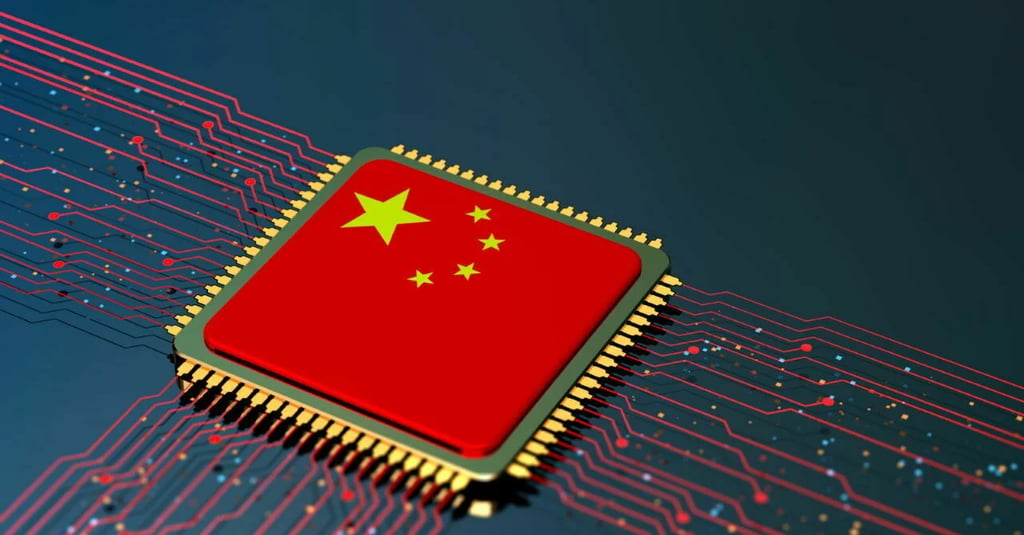U.S. Chip Restrictions Propel China's Race for Semiconductor Independence
Tightened U.S. export controls on Nvidia’s AI chips are accelerating China's push for self-sufficiency in semiconductors, with domestic firms making major — though uneven — progress toward closing the gap with global leaders.
BUSINESS
Emmanuel Makome
4/29/20252 min read


Washington’s latest restrictions on Nvidia’s H20 AI chips are likely to further accelerate China’s pivot toward homegrown semiconductor solutions, as Beijing doubles down on efforts to build a fully independent technology supply chain.
Years of U.S. controls on advanced chips have already fueled massive Chinese government investments in domestic semiconductor manufacturing, critical for sustaining growth in artificial intelligence and other high-tech sectors.
“China’s progress is being slowed by chip-related controls, but it’s hard to imagine stopping them forever,” said Ray Wang, a semiconductor analyst based in Washington, D.C., in an interview with Rest of World.
According to experts, China has made significant advances in certain areas like memory chips and chip design, even as it struggles with manufacturing equipment, one of the biggest bottlenecks in the supply chain.
Following the U.S. announcement of tighter restrictions, Nvidia CEO Jensen Huang made a surprise visit to Beijing, where he reportedly stressed hopes to “continue to cooperate with China.” However, China's tech sector is moving steadily toward self-reliance, with notable developments across key sectors:
1. Chip Design: HiSilicon vs. Nvidia
Huawei’s chip arm, HiSilicon, produces the Ascend series, one of China's most advanced AI processors. Last year, Huawei claimed its 910B AI chip outperformed Nvidia’s A100 — a chip now restricted by U.S. sanctions — in some performance tests. Georgetown University’s Center for Security and Emerging Technology called the two “roughly comparable,” though most U.S. chip firms still lead overall.
2. Chip Production: SMIC vs. TSMC
Semiconductor Manufacturing International Corporation (SMIC) is China’s top chip foundry. Despite U.S. rules barring Chinese firms from buying advanced tools, SMIC has achieved production of 7nm chips and is reportedly near producing 5nm chips in collaboration with Huawei. However, it still lags Taiwan's TSMC, which plans to mass-produce 2nm chips later this year. SMIC's advanced chips are also more costly to produce, largely due to outdated manufacturing equipment.
3. Flash Memory: YMTC vs. Samsung
Yangtze Memory Technologies Corporation (YMTC) leads China's flash memory sector with its 294-layer NAND chip, an upgrade over its previous 232-layer version. Global leader Samsung, however, remains ahead with a 286-layer product and is working on a 400-layer chip, maintaining South Korea’s edge in flash memory innovation.
4. Lithography: SMEE vs. ASML
Lithography remains China’s weakest link. Shanghai Micro Electronics Equipment (SMEE) is China's only producer of lithography machines, which are essential for printing intricate circuits on silicon wafers. While Dutch giant ASML dominates with its extreme ultraviolet (EUV) machines for chips smaller than 7nm, SMEE’s best machines can only manufacture 90nm chips — and is still developing 28nm capability. Reports suggest SMEE’s technology lags ASML by 15–20 years.
5. Chip Etching: AMEC vs. Lam Research
In the chip etching field, Advanced Micro-Fabrication Equipment Corporation (AMEC) has emerged as a key player, competing against U.S.-based Lam Research. Most of AMEC’s tools are now locally sourced, and its CEO Gerald Yin predicts China could catch up to global leaders within five to 10 years.
While China still faces steep challenges in achieving full semiconductor independence — especially in critical manufacturing equipment — its steady progress demonstrates that U.S. restrictions, while slowing China’s momentum, may ultimately be driving the country to accelerate its innovation and self-reliance agenda.
Photo: Getty Images/MF3d
© 2025. Ke Press Global. A Ke Harbor Company. All rights reserved.
FOLLOW KE PRESS GLOBAL ON :
Contact us


